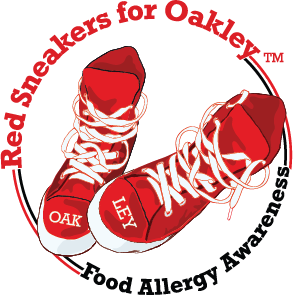Did You Know Halloween Makeup Can Cause an Allergic Reaction?
Did you know Halloween makeup and face paints can potentially lead to allergic reactions in children with food allergies?
Makeup products such as face paints may contain common allergens such as latex or certain food-based ingredients like nut extracts or wheat.
Here are 5 things that you can do as a food allergy parent to help keep your child safe during Halloween and also minimize the risk of an allergic reaction:
1️⃣ READ EVERY LABEL THOROUGHLY
Always read the ingredient labels on Halloween makeup and face paints. Since many allergens on labels appear as scientific names that most of us are not familiar with, we will include a list of their alternative names in the comments.
2️⃣ USE ALLERGY-FRIENDLY BRANDS
Research and choose makeup brands that are known for their allergy-friendly products. Check for products that have ingredients clearly mentioned so you can avoid them if they contain your child's specific allergen.
3️⃣ DIY MAKEUP
You could also consider making face paint at home using natural and allergen-free ingredients. Try checking online resources and recipes for homemade face paint.
4️⃣ INFORM TEACHERS AND CAREGIVERS
If your child will be participating in Halloween activities at school or at other organized events, it will help to inform teachers and caregivers about your child's food allergies so they use only safe products and costumes.
5️⃣ CONSIDER ALTERNATIVE COSTUMES
Another option is to explore alternative costumes that don't require face paint or makeup. To eliminate the risk of an allergic reaction you can use masks, hats, and accessories creatively to complete your child's Halloween costume without the need for makeup.
Alternative allergen names (not all-inclusive list) 👇
• Apple: Malus domestica, pyrus malus, pectin, malic acid, diisostearyl malate
• Banana: Musa sapientum fixa
• Celery: Apium, Apium graveolens
• Corn: frumentum. Zea Mays (corn starch) Beware of corn derivatives-corn silk extract, potassium cornate, hydrolyzed corn starch, corn protein, corn acid, and corn glycerides
• Dairy: also known aslac/caprae lac. Look out for milk derivatives: lactoferrin, colostrum & lactoperoxidase
• Egg: ovum/ova also lysozyme is an egg derivative
• Fish: piscum lecur/ piscis
• Kiwi: Actinidia deliciosa
• Mustard: brassica alba/sinapis alba
• Pea: pisum sativum
• Peaches: persicorum
• Peanut: arachide or arachic oil, arachis, arachis hypogea
• Sesame: sesamum indicum
• Shellfish: chitosan, or chitin is a sugar that is obtained from the hard outer skeleton of shellfish, including crab, lobster and shrimp/prawn
• Soy: glycine max/glycine soja
• Sulphites: sodium sulphite, potassium metabisulphite
• Sunflower Seed: (oil) helianthus semen oleum/ helianthus annuus
• Tree Nuts: (including but not limited to)
• Sweet almond oil: prunus amygdalus dulcis
• Bitter almond oil: Prunus amygdalus amara, mandelic acid
• Argan Nut/Argan Oil: Argania spinosa
• Brazil nut: bertholletia excelsa
• Cashew: anacardium occidentale
• Chestnut: castanea sativa
• Coconut: cocos nucifera, coconut acid, hydrogenated coconut oil, coconut alcohol, butylene glycol cocoate, caprylic/capric/coco glycerides, coconut oil decyl esters, decyl cocoate
• Hazelnut/Filbert: corylus rostrata/avellana
• Macadamia: macadamia ternifolia, m. integrifolia
• Pecan (Hickory): carya illinoinensis
• Pine Nut: pinus pinea
• Pistachio: pistacia vera
• Shea: Vitellaria paradoxa
• Walnut: juglans regia/ nigra
• Wheat: triticum vulgare, hordeum vulgare (barley), secale cereale (rye), avena sativa (oat)
Source: thezestfull.com/food-allergens-in-beauty-products-guide/
